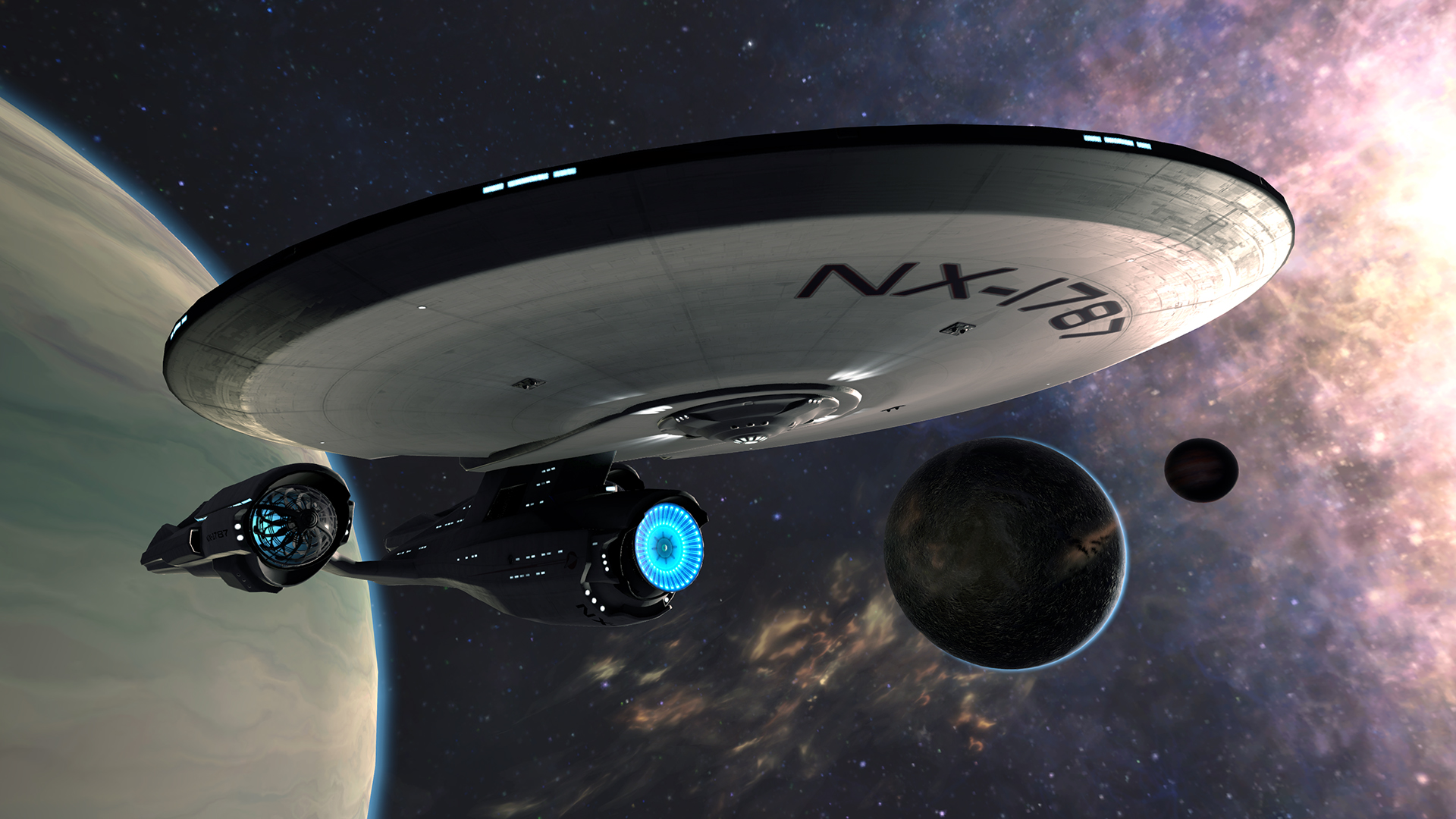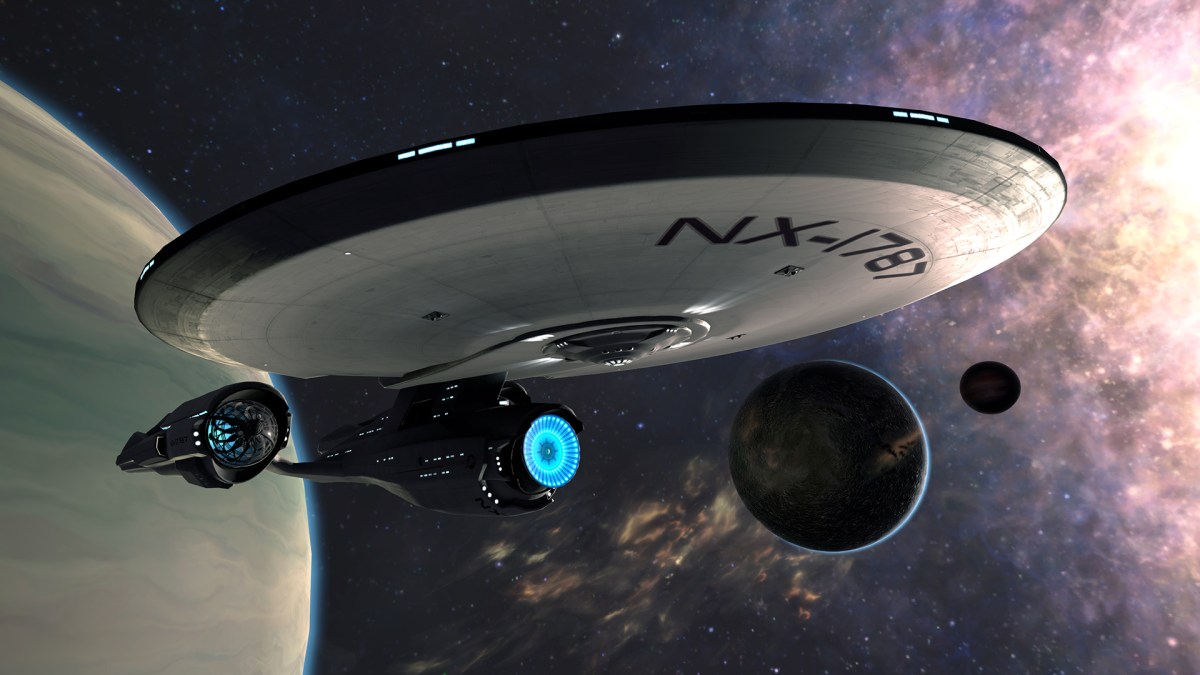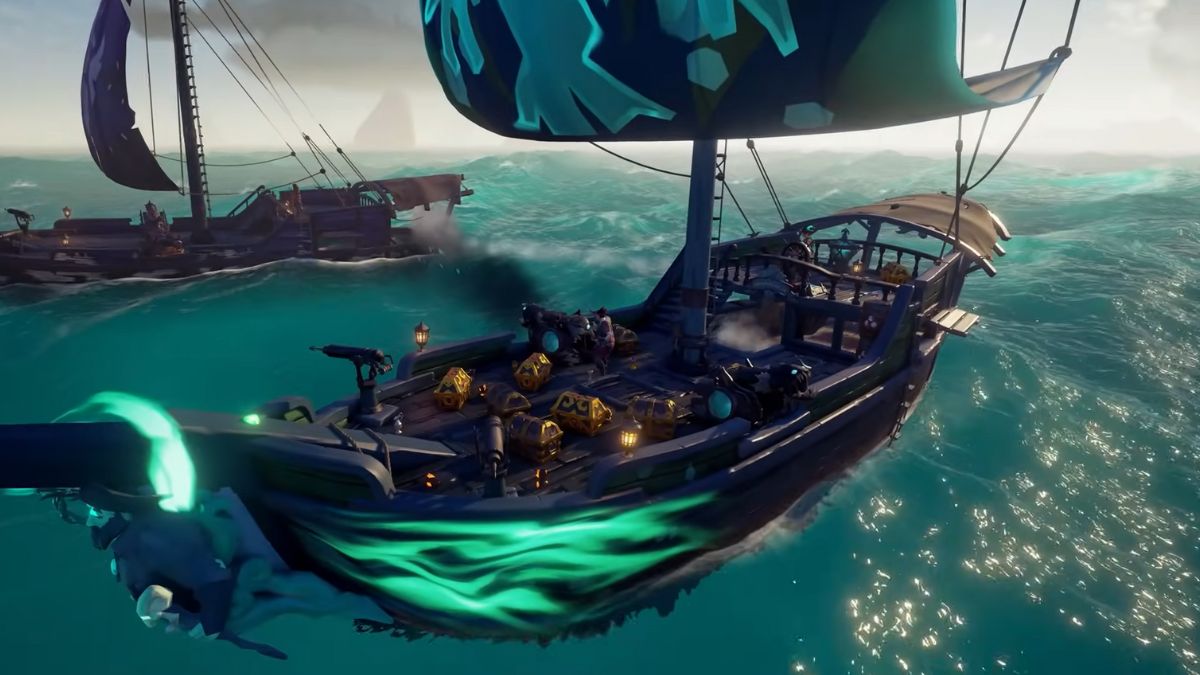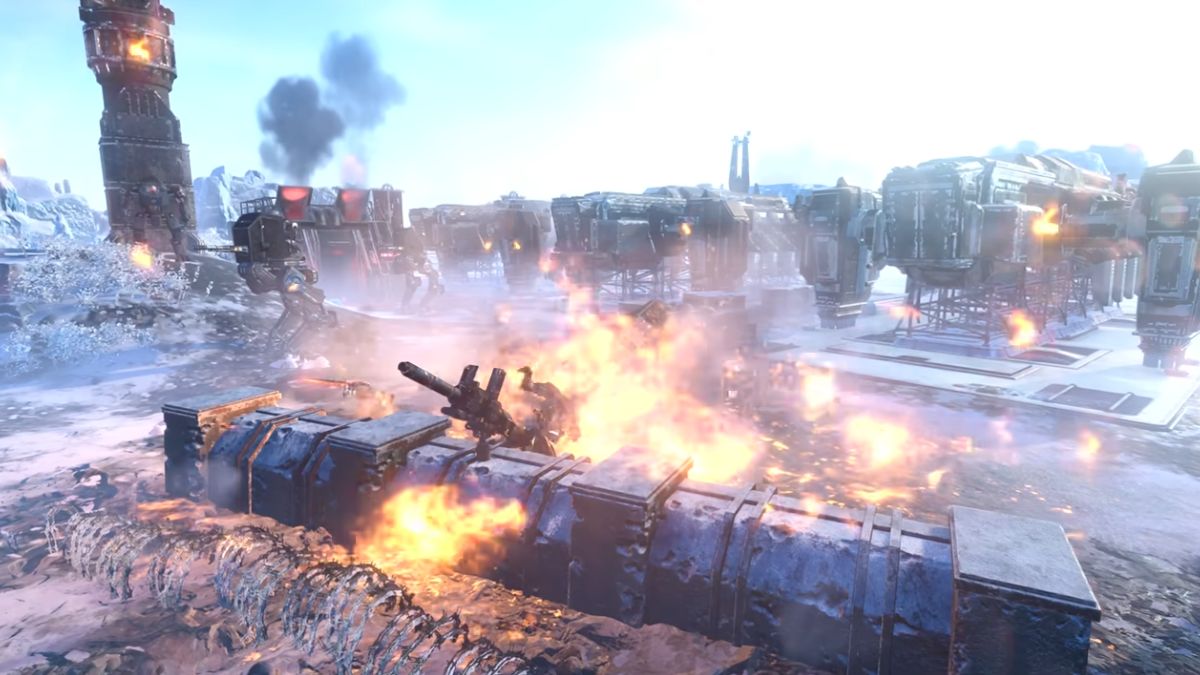Job Simulator: Starfleet Edition
If there’s any quintessential Star Trek fantasy, it’s probably of being on the bridge of one of the series’ iconic starships. Be it the Enterprise, Defiant, or Voyager, Star Trek has long defined itself through command decks and the people sitting on them.
Star Trek: Bridge Crew promised to use VR tech to put players in that fantasy, but after repeated delays, can Ubisoft and Red Storm bring that 23rd-century Federation experience to life?

Star Trek: Bridge Crew (PlayStation VR [Reviewed], Oculus Rift, HTC Vive)
Developer: Red Storm Entertainment
Publisher: Ubisoft
Released: May 30, 2017
MSRP: $49.99
I’m not going to bury the lede here: Star Trek: Bridge Crew accomplishes this feat rather brilliantly. At this point, it might be my favorite VR experience to date.
That said, I am compelled to qualify my statement, in that that brilliance comes more despite the limitations of the game than because of it. Indeed, while what Red Storm has developed can be solid platform for some choice Trek interactions, the content in the software itself come across as a bit thin.
If nothing else, the game does exactly what it says on the box: It places up to four players in the position of being members of a Star Trek starship’s bridge crew. Each player, wearing one of the three major VR headsets (I played on a PSVR), takes one of the stations aboard the bridge of a ship, and uses either a pair of motion controllers or a gamepad to manipulate the controls for that station. Together, the players will cooperate to accomplish the missions and run the ship.
Each bridge station has a distinct function and unique capabilities. Helm officers pilot the starship, plotting courses to different navigation points, aligning the vessel on impulse or warp vectors, and managing the throttle. Tactical officers can scan objects in the local vicinity, locating life signs, ferreting out navigational hazards, and isolating enemies’ subsystems. They can raise and lower the ship’s shields, as well as use phasers and photon torpedoes to destroy or disable enemy ships. Engineers allocate power to ship systems, increasing or decreasing their effectiveness. They can temporarily reroute power to different systems for a quick boost, as well as direct repair teams to contain damage sustained in combat.
Shared between these three stations are controls for the ship’s transporter, as well as a “System Intrusion” hacking mechanic that allows the crew to get a leg up on enemy ships in combat. The fourth station, the Captain’s coordinates the other three stations’ efforts, by alerting the crew to mission objectives, answering incoming communications, and manipulating the main viewscreen. Captains are also the only players who can take control of AI crew stations, in case the session is short a station or two.

These interactions, in and of themselves, are fairly simple ones. Ultimately, they boil down to three different ways to interact with a control panel, after all. But it’s more than that, though. The genius of Star Trek: Bridge Crew – lies in the fact that no one person on the crew has everything they need to do their job.
The Captain knows the objective and how to complete the mission, but needs the other three stations working in order to actually get anything done. A helmsman can maneuver the ship and set course to the objective, but needs the Engineer to allocate power to his systems and prime the warp engines for travel. The Tactical officer can engage targets and destroy threats, but will need both the Helm and Engineer to keep the ship in effective range and ensure there’s enough power. The Engineer can greatly increase the effectiveness of the other stations, but needs to balance their demands as well as keep the ship in good working order.
Staying on top of all of this under pressure to accomplish mission objectives like rescuing castaways while under fire, or scanning crucial anomalies and escaping before a star explodes, requires communication. Bridge Crew isn’t a game for the shy, and everyone on a crew will need to speak up to get the job done.
But the best part is that the nature of this required cooperation tends to prompt people to, for lack of a batter word, act professionally. Rather than trash-talk or racial epithets or insults (the usual language of pick-up game voice chat) the vast majority of random crewmates I played did their jobs, and in doing so ended up sounding just like one might imagine an actual Star Trek bridge crew might, issuing reports on their status, making (polite) requests, and even cracking up a bit during the more stressful missions. Even little things, like the way it’s easier to say “Helm”, or “Captain” or “Tactical” than it is to read someone’s absurd nickname tends to have people address each other like they might if they were actual crew members on a ship. This natural “role-playing” feels profound and frankly magical when combined with the sense of presence one gets from using VR headsets and motion controllers.

Of course, I might be a somewhat biased observer, being a hardcore Trek nerd who’s been dreaming of this sort of experience since childhood. I’d wager that many of the people I interacted with were in the same boat. I also can’t imagine what it might be like trying to get over a language barrier (the Asia-region servers weren’t especially populated at the time of review). And yet, I can still recognize that while Bridge Crew is the closest I’ve come yet to realizing that longtime Trekker fantasy, it’s not quite all there yet.
The campaign is something of a disappointment, for one. Lasting between 3 and 5 hours, the handful of story missions available tell the tale of the U.S.S. Aegis, a new starship from the rebooted continuity (AKA “The Kelvin Timeline”) sent to explore a region of space in search of a new homeworld for the Vulcans. Unfortunately, most of the drama just doesn’t land, and the actual missions merely function as an in-depth tutorial for the different stations.
This puts the onus for the game’s longevity on its “Ongoing Missions” mode, a procedurally generated set of challenges and randomized missions designed to test a crew’s coordination. These work, but it’s clear that something is missing without the benefit of a bespoke, scripted campaign.

Further, Bridge Crew‘s (natural) emphasis on limiting action to the bridge and ship itself expose a somewhat uncomfortable truth, that contradicts the opening statement of my review: As it turns out, Star Trek is a lot more than the bridges of its famous starships.
The crew can’t get together in a conference room to figure out that the mysterious signal that’s giving them horrible visions of atrocities is, in fact, a psychic memorial planted by a long-dead alien race. They can’t get the engineer can’t modify the navigational deflector to mimic cosmic string vibrations and draw off a dangerous herd of two-dimensional space beasts. They can’t infiltrate a malfunctioning holodeck game program and seduce its boss character to end its feud with a race of holographic aliens.
By the way, all of the above are actual plot points from Star Trek episodes. Suffice it to say that much the drama, adventure, and hijinks of the last fifty years feels absent when people are confined to their seats and left to simply do their jobs. In a way, playing Star Trek: Bridge Crew feels sort of like being part of a crew that is not starring in its own Star Trek show, they’re just there, doing their jobs while other, more photogenic officers, go and get themselves into trouble.
One could, of course, try to do this in a more single-player setting. Bridge Crew supports the use of AI crewmates, with the player using the captain’s chair and issuing orders with a radial menu, but the resulting game is oddly silent and quite difficult, as the AI is a bit dim and will require babysitting. It’s like trying to play Overcooked alone: You can do it, but it’s clear that it’s not the best or most enjoyable way to play.

Of course, this assessment is somewhat unfair. The game is Star Trek: Bridge Crew, not Star Trek: Story Simulator. And yet even 2001’s Star Trek Bridge Commander had a more substantial and diverse story campaign, one with a classic Next Generation plotline. I guess I’m trying to say I wish the campaign was stronger and more fitting of how lovely the game feels to play, especially with other people. That’s why I referred to Bridge Crew as a “platform” for Star Trek, since its actual content doesn’t quite live up to its design.
But what a platform, though! Star Trek: Bridge Crew is a brilliant VR experience, and pushes the technology to emphasize social interaction and cooperation in a way only a handful of other titles have been able to realize. Beyond that, it’s fine slice of Star Trek fan service, as well. There’s plenty more new life and new civilization to find in Star Trek: Bridge Crew, and I’m hoping that it’ll be able to boldly go and realize the rest of its potential.
[This review is based on a retail build of the game provided by the publisher.]





